
“What does he look like?”
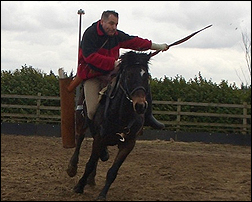
Wet sand makes for a hard landing.

A steppe saddle, wooden framed saddle and German “pad” saddle.
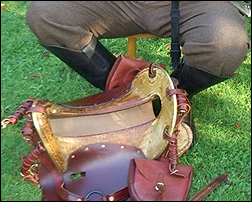
A Confederate style reconditioned McClellan military saddle.

Hal decorated with antler and boars tusk amulets, as well as melon beads around the neck, often associated with horses.

Controlling the horse one handed by neck reining.

The steppe saddle. A strong design based around four planks of wood.

Murph, a grumpy Irish cob.

Hal at speed. A thoroughbred Welsh cob cross.

Shooting to the right.
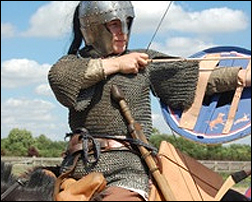
Shooting to the rear.

Shooting to the left, the easiest shot.


A back handed cut.

Cavalry helmet, padding, mail, armour, trousers, leg wraps and splinted leg armour all used to hide the female figure.

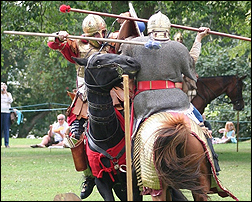
Testing armour and equipment to the full.
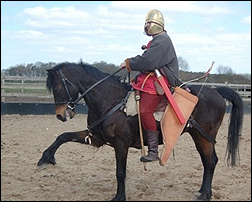
The Concesti Roman helmet, found in an early 5th century Hunnic grave, with Hunnic riding coat and boots.
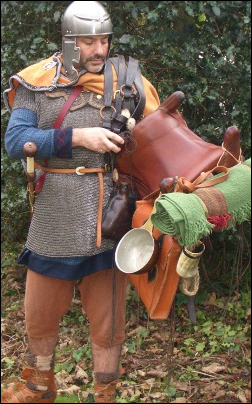
A Roman cavalryman of the 1st century BC, using helmet, armour and saddle technology borrowed from the “barbarians”.

A 10th century Byzantine cavalryman of Khazar origin.

The draco standard giving wind direction.

The Niederbieber lizard.
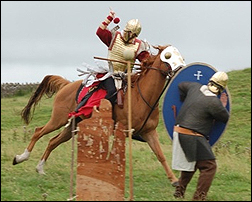
A helmet about to be dented.
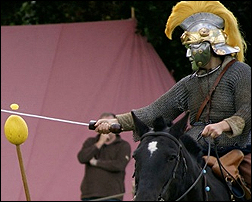
A copy of the 1st century AD cavalry helmet found at Witcham Gravel near Ely, worn with a face plate during the cavalry sports.
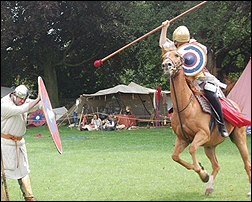
The moment of impact, using the whole weight of the horse.
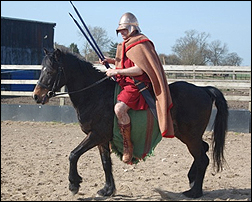
A Greek cavalrmany from around 350 BC based on the writings of Xenophon.
